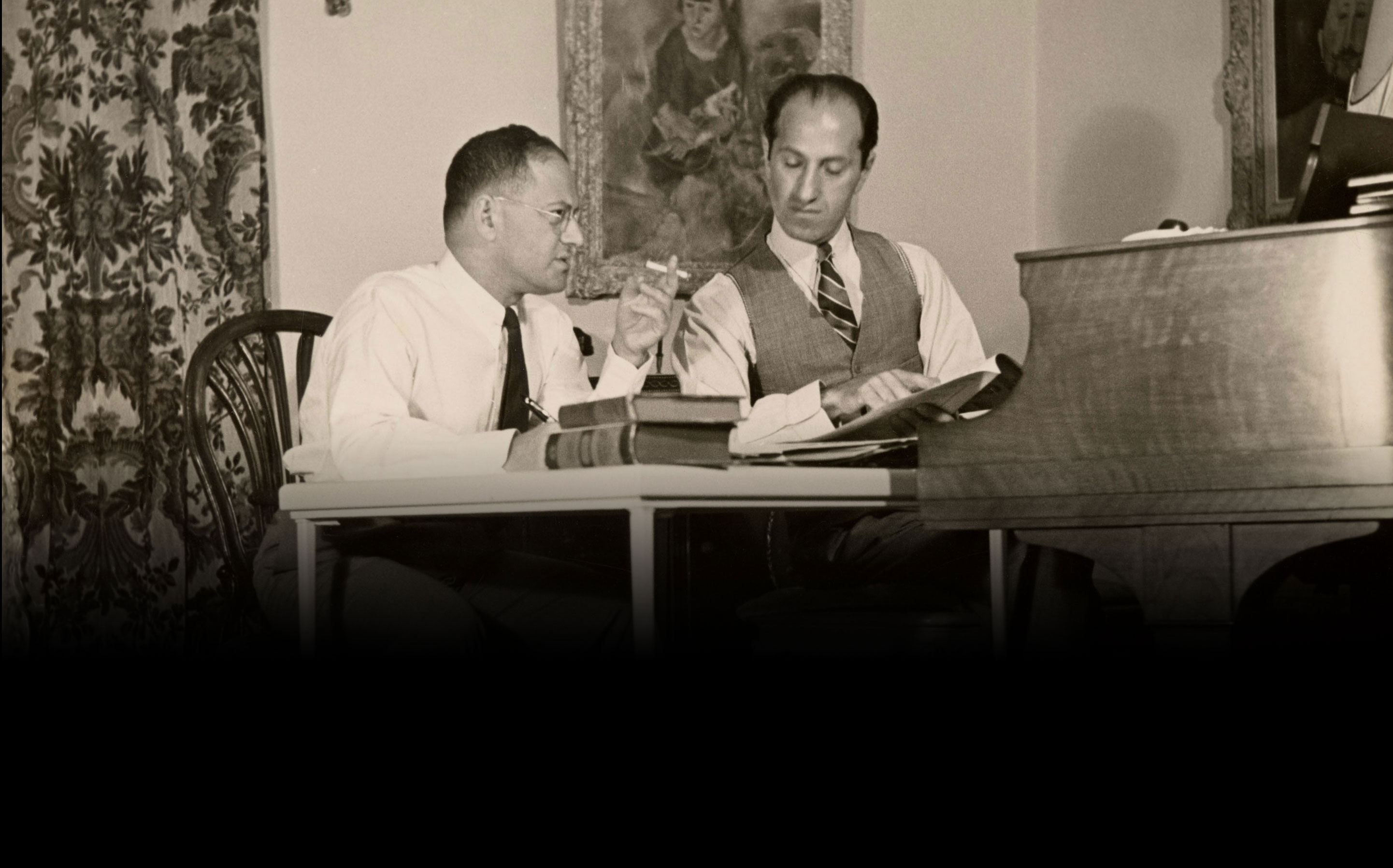“I can’t think of a more vital and beloved American composer in need of authoritative and sympathetic performing editions than George Gershwin. His music IS American music.”
—Loras John Schissel
Senior Musicologist,
Music Division of the United States Library of Congress
Editorial Board Member, George and Ira Gershwin Critical Edition
George Gershwin (1898–1937) is one of the world’s most popular and successful composers of the 20th century in any genre—a status that is both compliment and curse. In his too brief but prolific career, George Gershwin composed a long list of popular songs, many written for Broadway and for Hollywood films. He worked with the early 20th century’s top lyricists, though his most brilliant collaborations were with his brother Ira Gershwin (1896–1983), with whom he enjoyed a unique and prolific partnership. Together they have long been honored as two of the leading contributors to the “Great American Songbook.”
George Gershwin created some of music history’s most cherished melodies, not only in song, but also in works for orchestra, such as the jazz-inspired Rhapsody in Blue, and in what is arguably the most significant American opera, Porgy and Bess (with lyrics co-written by Ira Gershwin and DuBose Heyward, on whose book the opera is based).
Ira Gershwin is celebrated for his genius with words, crafting hundreds of lyrics that are clever, funny, moving—or all of the above. Adept at implementing new lyrical styles, playing with timing and incorporating unusual word combinations, he was the first lyricist to be awarded a Pulitzer Prize (in 1932 for Of Thee I Sing).
Ira Gershwin was born as Israel Gershowitz on the Lower East Side of New York City, and George Gershwin was born Jacob Gershwine in Brooklyn, New York. Their Jewish immigrant parents, from St. Petersburg, had joined the American melting pot seeking better opportunity. George took immediately to the piano bought originally for Ira and studied piano with Charles Hambitzer. George later studied composition with Rubin Goldmark and modernist Henry Cowell. George’s skills at the keyboard were admired by African American stride pianists such as Luckey Roberts and James P. Johnson. After George began making a name for himself in the music business, he encouraged Ira to try his hand at writing lyrics. Ira wrote his first song in 1918, launching both his songwriting career and the remarkably successful partnership with his brother.
Perhaps more than any other American composer, George Gershwin integrated a range of musical genres, most notably blending classical music with jazz, blues and popular music phrasings. Influenced by his on-the-job songwriting and performing experience working in New York City’s Tin Pan Alley as a “song-plugger,” George created musical compositions distinguished by their playful and engaging melodies and seemingly spontaneous inflections. He infused popular song with enriched classical harmonies and imbued symphonic and operatic works with the improvisational energy and rhythmic vitality of jazz. His music, according to U-M musicology professor Mark Clague, reflects the power of the American cultural melting pot: A blend of sonic dialects and styles at the heart of democracy.
Because of his tragic and unexpected death due to an untreatable brain tumor, George Gershwin simply did not live long enough to give proper consideration to his musical legacy. Aaron Copland, by contrast, lived to be 90 years old, and his work has been published in accurate and authoritative editions. Following George’s death, Ira continued—after a three-year hiatus—to write lyrics with many talented composers. The George and Ira Gershwin Critical Edition and the U-M Gershwin partnership will at last give the Gershwins’ musical work the editorial attention their artistic stature requires.
